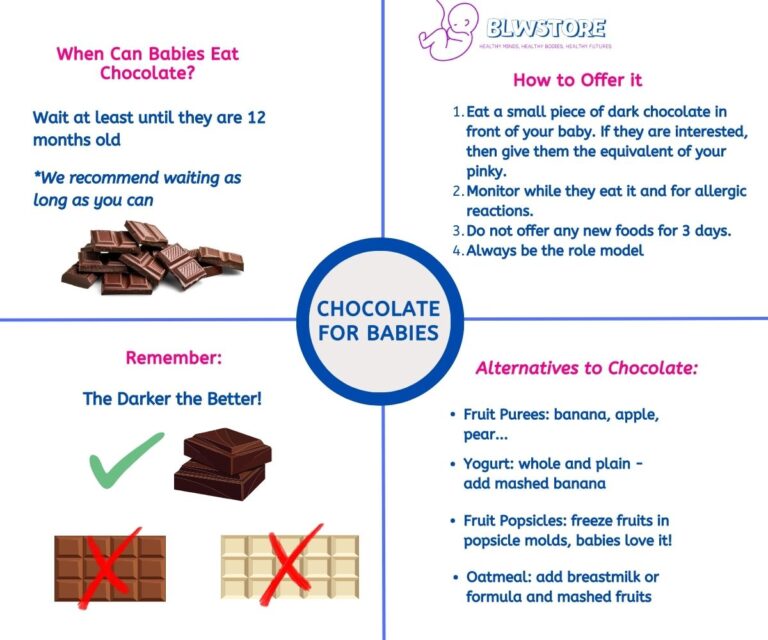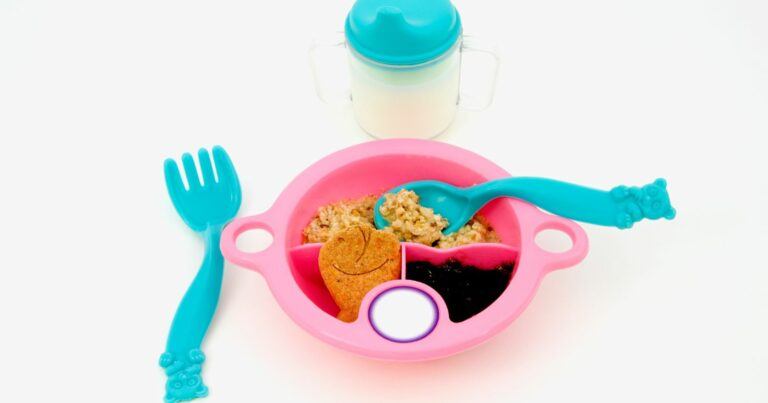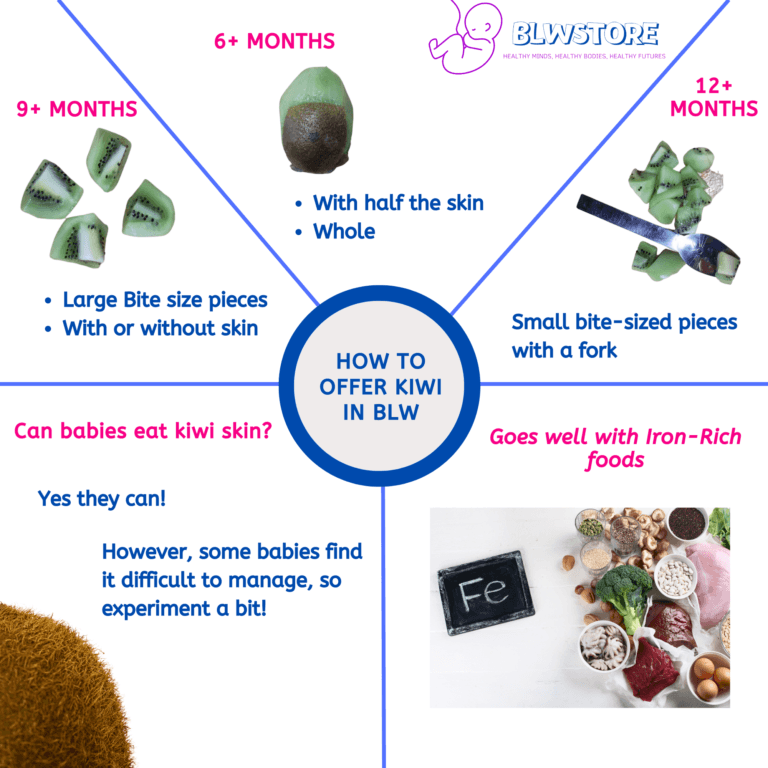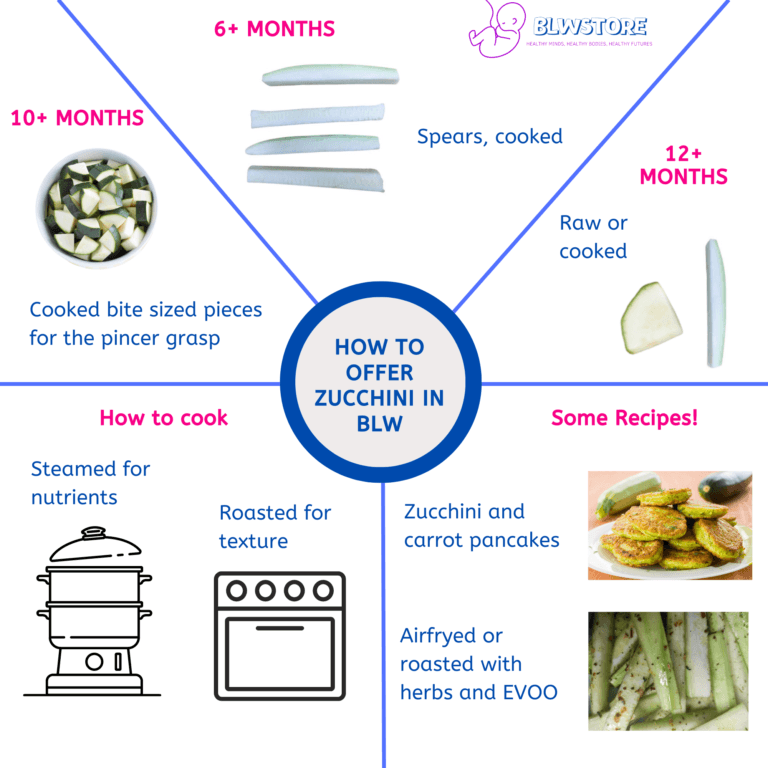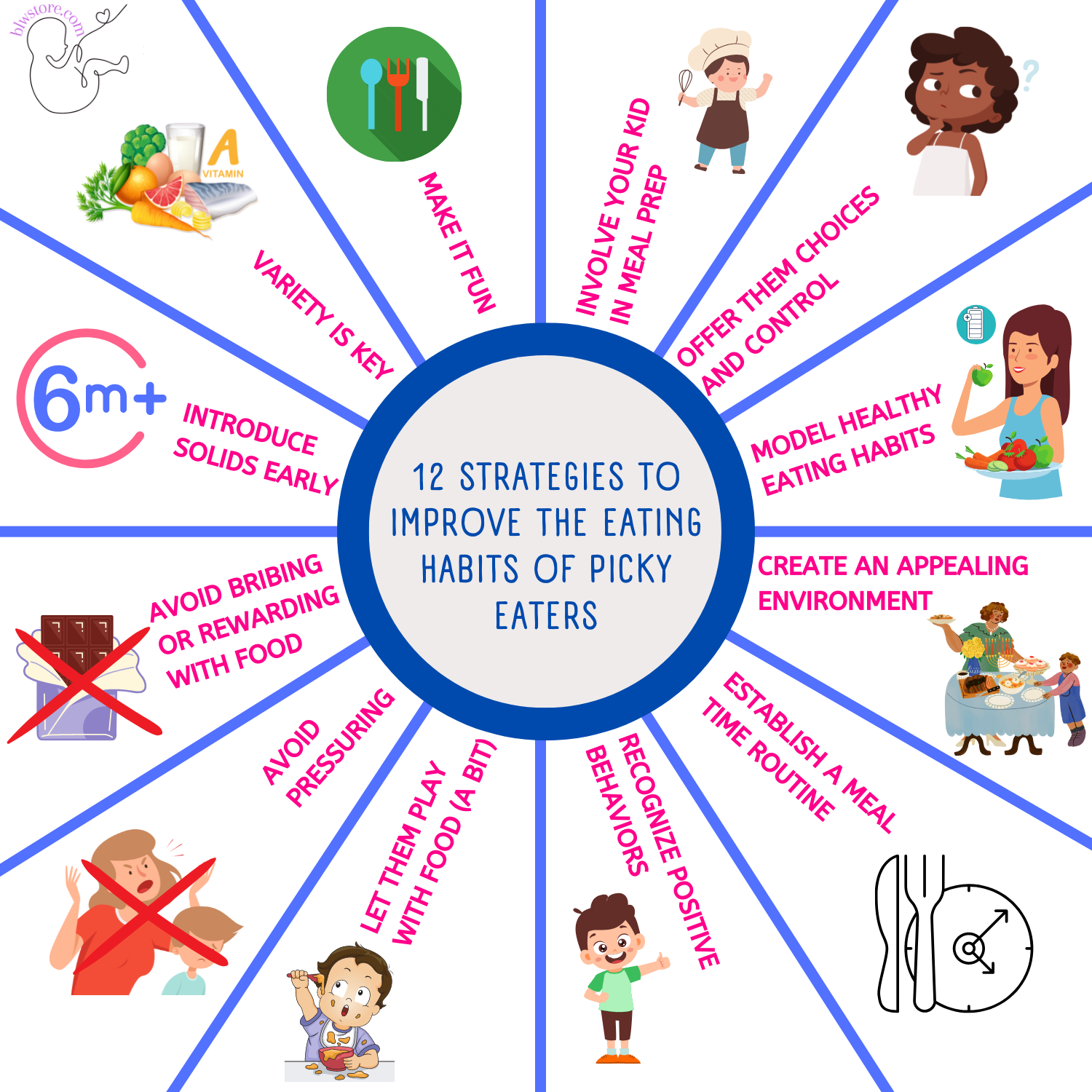
Are you struggling with a toddler who refuses to try new foods? You’re not alone, this is typical and it’s one of the most common fights we have as parents.
In this article, we’ll explore this “toddler picky eating” problem, and share 12 tips and tricks we have personally followed to help improve your little one’s eating habits.
You’ll learn about:
- Introducing solids early for a smooth transition
- The importance of food variety for a balanced diet
- Making mealtime fun and engaging for your toddler
- Involving your child in meal prep to spark their interest
- Offering choices and control to promote independence
By the end of this article, you’ll better understand how to deal with your picky eaters and help them develop healthier eating habits.
Key takeaways
- Start with solids early, around six months old, to help your toddler develop a taste for a variety of foods.
- Offer a wide range of food options to encourage exploration and acceptance of new flavors and textures.
- Make mealtime fun by involving your toddler in meal preparation and creating an appealing environment.
- Give your toddler choices and control during mealtimes to foster independence and self-confidence.
- Model healthy eating habits and avoid pressuring, bribing, or rewarding with food to maintain a positive relationship with food.
1. Start with Solids Early

It’s best to introduce solid food at 6 months old when your baby has developed enough motor skills (like sitting up) to help them eat independently.
Make sure you offer age-appropriate foods that are soft enough for them to chew easily and avoid any potential choking hazards, such as nuts or hard candy. Offer small amounts of food at first so they don’t get overwhelmed with too much flavor or texture all at once.
Related reads: Baby-Led Weaning Guide | How to Introduce Solid Foods
2. Food Variety is Key

As mentioned before, variety is key when introducing new foods. Try mixing different flavors, like sweet potatoes mixed with applesauce or oatmeal mixed with banana puree – this helps keep things interesting while exposing your child to different tastes and textures.
You can also try blending vegetables into sauces or soups if they don’t seem interested in eating them on their own yet – this way, they still get the nutrition without having actually to eat the vegetable itself.
Related reads: 20 Lunch ideas for Toddlers | Breakfast ideas for Toddlers
3. Make it Fun for your Toddler

Involvement in mealtime preparation can help make mealtimes more enjoyable for both you and your toddler.
Creating an appealing environment by setting out colorful plates or using fun utensils can make meals more exciting for little ones who may otherwise not want anything to do with trying something new.
4. Involve Your Toddler in Meal Prep

Getting your toddler involved in meal preparation is an important step towards setting them up for mealtime success. Letting them help with simple tasks like washing vegetables or stirring ingredients together will give them a sense of ownership over their meals and encourage them to try new foods.
Additionally, adding toppings onto dishes encourages exploration which leads to better acceptance of unfamiliar flavors down the line. It’s also a great way to spend quality time together as a family.
5. Offer your Toddler some Choices and Control

Giving your toddler choices during mealtimes helps foster independence while still providing structure. Offer two or three options from each food group you know they enjoy so they have something familiar to choose from if needed. This will make them feel empowered and will promote their self-confidence.
This can be as simple as offering your child sweet potato or avocado, so they can decide which they prefer.
6. Model Healthy Eating Habits

As adults, we set the example when it comes to our own eating habits – so it’s important that we model healthy behaviors around food for our children too.
Showing enthusiasm about trying new foods yourself sets an example of positive behavior that encourages your child to do the same thing. And don’t forget – practice what you preach. If you want your child to eat more fruits and veggies, make sure those are part of your own diet as well.
7. Creating an Appealing Environment

Place a few toys on the table your toddler can play with while eating, such as stacking cups or shape sorters. Having something to do will help keep them occupied during meals.
Put on some music they like (no TV though), make sure they are comfortable by choosing a proper high chair, and let them decide more aspects of the table.
8. Establish Regular Meal Times and Routines

Consistency is key when it comes to establishing regular meal times for toddlers. Try setting up a routine where you serve meals at the same time each day so your child knows what to expect from mealtime every day.
This helps build healthy habits and encourages good behavior around food since they know what’s expected of them when it’s time for dinner or lunch.
9. Recognize positive behaviors

It’s important to recognize positive behaviors during mealtimes to encourage healthy eating habits in your toddler. When they try new foods, offer praise such as “Good job. You tried something new today.”
If they don’t finish their plate, don’t get angry; thank them for trying and tell them how proud you are of their effort. Using positive reinforcement strategies, you’ll create an environment where your child feels safe enough to explore different types of food without fear of punishment if they don’t like it or refuse it altogether.
10. Let them Play with food a bit

Letting your child play with their food (in moderation) can also help make mealtimes more enjoyable and encourage them to try something different.
Letting them explore the texture of the food by touching it or squishing it between their fingers may make them more likely to give it a taste.
11. Start small with new foods

Offering smaller portions of new foods at first is another great way to introduce picky eaters to something unfamiliar.
Start with just one bite and let your child decide whether they want more after that – this gives them control over what they’re eating, which may make trying something new less daunting for them.
12. Avoid pressuring, bribing or rewarding with food

When dealing with picky eating behaviors, avoid pressuring or forcing feeding as this will only create negative associations with certain foods.
Similarly, avoid bribing or rewarding with food as this reinforces unhealthy habits and labels certain types of food as “good” or “bad” which is not helpful either.
Instead focus on positive reinforcement strategies such as praising when they do take a bite of something new – even if it’s just one small bite.
Extra advice: Don’t label your child as “picky”
This can hurt their self-esteem and cause them to become even more resistant to trying new foods. Focus instead on praising them for trying something new, no matter how small the portion size is, so they feel encouraged rather than discouraged by mealtimes.
What do you do when your picky toddler won’t eat?
When your picky toddler won’t eat, it can be a challenge.
- First, ensure they get enough nutrition throughout the day by providing healthy snacks and meals.
- Empower your toddler to choose what they want to eat. Give them choices so they feels in control (even if the choices are yours).
- Avoid having processed or visually appealing foods for your toddler. Deny their existence (although it’s best not to have them directly).
- Lastly, don’t give up. Keep offering new food options, and eventually, your toddler will find something they like.
The most important thing is to now force feed and do not get angry. Be a role model. Follow the tips from these guide and consistency will win.
Last Words
In conclusion, addressing toddler picky eating takes patience, creativity, and consistency.
By introducing new foods, making mealtime enjoyable, and involving your child in the process, you can help them become more open to trying different flavors and textures.
Remember, developing healthy eating habits is a journey, so be patient and enjoy the experience together.
With these tips in mind, you can help your picky eater explore different flavors and textures without feeling overwhelmed or frustrated.
Remember that it takes time for children to develop healthy eating habits, so be patient and enjoy the journey!
If you need more particular and individual help, do not hesitate to comment or send us an email. We will be more than happy to help.
We’re Maria and Alberto, a married couple and educators who are nutrition enthusiasts. Even before we had kids, we were already crazy about nutrition.
We’d read scientific articles, watch videos from nutritionists, and spend hours listening to nutrition podcasts.
Today, we continue doing this, but in a different way, as we’ve learned to sift through the noise and trends. Nutrition, like any other field of knowledge, the more you read and learn, the more you develop a comprehensive understanding of reality, and that’s what has happened to us.
Before having our first child, we focused on learning everything we could about child nutrition, using the same techniques we had already employed, backed by our extensive knowledge in nutrition.
Our mission is to help other parents with their children’s nutrition, to help them become the best versions of themselves.
If we are what we eat and drink, which is absolutely true, let’s do it right!



